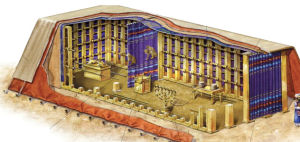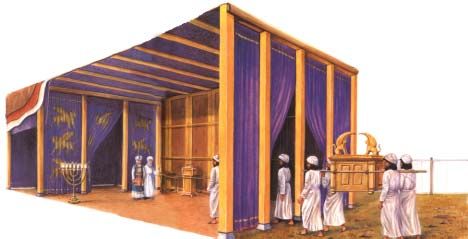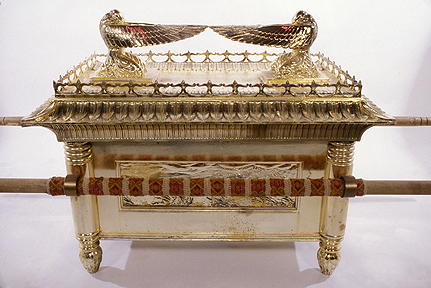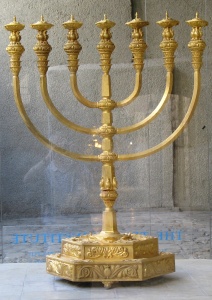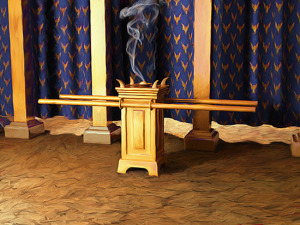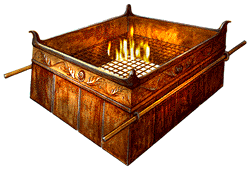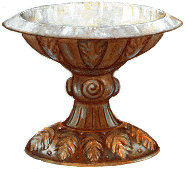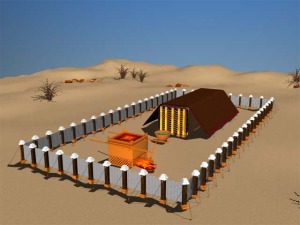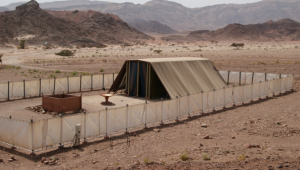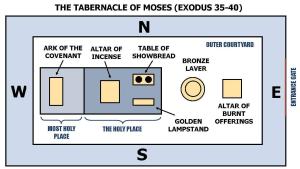ויקהל
Parashat WaYakhel (VaYakhel)
Shemoth (Exodus) 35:1-38:20
And Mosheh assembled all the congregation of the children of Yisrael, and said to them, “These are the Words which YaHuWaH has commanded you to do – Shemoth (Exodus) 35:1
This Torah Portion is called ויקהל “WaYakhel” which literally means “and he assembled.” The root word of this phrase is קהל “Qahal” which literally means “assembly.” This word was translated into the Greek word Eklessia which has been translated to the Latin “circe” and from there evolved to the modern word “church.” The Qahal has never been a gentile gathering or some elaborate building but has always been YaHuWaH’s true assembly. Therefore the assembly, the Qahal of YaHuWaH is the nation of Yisrael (Israel/Yashar’el), which includes the strangers and sojourners who have been joined into the covenant.
Mosheh (Mushah) descended down the mountain for the eighth time. Then he gathered the Qahal (assembly) to teach them the Torah (instruction), which he was given at the top of Mount Sinai. The first instructions are in regard to the Shabbat שַׁבָּת. Shabbat is referred to as שַׁבָּתוֹן “shabbaton” which means a “Sabbath of rest” or a “complete Sabbath.” Any being that does “melakhah”, which translates work or business, shall be put to death. This also applies to anyone who practices “abodah” or physical labor or servant work. In addition YaHuWaH’s Torah declares that fire must not be kindled upon the Shabbath day.
Mosheh also announced that YaHuWaH had forgiven Yisrael for worshipping the golden calf. We know by using simple math that Mosheh announced this some short time after Yom Kippur (day of atonement). Not only did YaHuWaH forgive his people for this grievous sin but also his Kabod (esteem) would dwell in their camp, in the Mishkan (dwelling place).
Finally, Mosheh calls for the contribution or terumah. This terumah would be a free will offering unto YaHuWaH (nedabah l’YaHuWaH) of gold, silver, bronze and other such materials required for the Mishkan and it’s furniture. All whose “heart moved him” responded in so much that Mushah had to announce that no more should be brought. There was enough of the contribution to build the Mishkan, it’s furniture and have much more to spare.
It is understood amongst the Yahudim (“Jews”) that the Shabbath commandment is given along with the order for constructing the Mishkan to teach us what “work” or “melachah” truly is. The thought is that whatever types of work are related to the Mishkan is prohibited on the Shabbath. This would include weaving, sewing, forming, construction, slaughtering, harvesting, sawing etc.
Construction of the Mishkan
Betzal’el and Oholiab were called by name, by YaHuWaH himself to lead the construction. Betzal’el is a picture of Mashyach (Messiah) as he was from the royal tribe of Yahuwdah, “filled with the ruach (spirit) of Elohim”, he is called by name and that name means “in the shadow of Aluahym (Elohim)”. His coworker Oholiab’s name means “tent of Father.”
“And they made the ten tapestries of the Mishkan [‘s roof] of finely-spun linen and [wool dyed] blue, purple and scarlet; with cherubim of artistic work did [Betzalel] make them”…
“And he made sheets of goat-hair as an Ohel (tent-covering) over the Mishkan — eleven sheets he made them…
“And he made the boards for the Mishkan [‘s walls] of shittim wood, to be stood upright… twenty boards for the south walls; and forty silver foundation-sockets made he under the twenty boards: two sockets under each board, for its two pegs… And for the other side of the Mishkan–for the north side–he made twenty boards and forty silver sockets… and for the rear of the Mishkan, to the west, he made six boards, and two boards for the rear corners”…
And he made the Parochet (the “veil”) of blue, purple and scarlet, and fine-spun linen; with artistically woven cherubim he made it…
And he made a Screen for the doorway of the Tent: of blue, purple and scarlet, and fine-spun linen, with embroidered work…
They constructed the curtains, hooks, boards for the walls and sockets to keep the structure together first, of course.
The Qodesh (set apart) Vessels for inside the Mishkan
And Betzal’el made the Ark of shittim wood: two cubits and a half was its length, and a cubit and a half its breadth, and a cubit and a half its height. And he overlaid it with pure gold within and without, and made a rim of gold to it round about….
And he made the Kaporet (the Ark’s cover) of pure gold.. and he made two cherubim of gold, beaten out of one piece he made them, on the two ends of the covering… And the cherubim spread out their wings on high, and spread with their wings over the covering, with their faces one to another…
And he made the Table of shittim wood… and covered it with pure gold…
And He made the Menorah of pure gold; of beaten work made he the Menorah, its foot, its shaft, its branches, its goblets, its bulbs, and its flowers, were of the same piece…
And he made the Incense Altar of shittim wood… and covered it with pure gold…
And he made the Anointing Oil Qodesh, and the Incense of Spices pure…
The Qodesh (Set Apart) vessels for the outer courtyard
And he made the Altar of Burnt Offering… five cubits was its length, and five cubits its breadth; it was foursquare; and three cubits its height…
And he made the Basin of bronze, and its pedestal of copper, out of the mirrors of the women assembling, who assembled at the door of the Tent of Meeting…
And he made the courtyard: on the south side, he hangings of the court were of fine twined linen, a hundred cubits in length; their pillars were twenty, their copper sockets twenty, and the hooks of the pillars and their trimmings were of silver. And for the north side the hangings were a hundred cubits… And for the west side were hangings of fifty cubits… The [width of] the east side was fifty cubits, [with] hangings of fifteen cubits on each side [of the entrance]…
And the screen for the gate of the court was embroidered work, of blue, purple and scarlet, and fine twined linen; and twenty cubits was the length…
And all the pegs of the tabernacle, and of the court round about, were of copper.
Mishkan overview
The Mishkan consists of many parts yet is called Echad (one). There are two major parts of the Mishkan, an outer court yard or “chotzeir” and the tent or “ohel”. The tent or “ohel” would be located within the large courtyard or “chotzeir”. The “Chotzeir” was 100 cubits long and 50 cubits wide (a cubit is 19 inches, or 50 cm). A linen barrier that was held up by poles and fastened to the ground with stakes surrounded the courtyard. In the center of the courtyard stood the large copper altar, which was used for animal sacrifices. Between the sacrificial altar and the entry of the tabernacle stood the bronze laver where the Kohanim (Priests) would wash their hands and feet.
The tabernacle itself was 30 cubits long and 10 cubits wide. The walls were made of thick, gold-plated, acacia-wood beams. The beams were interlocking with silver sockets that were held in place by long, gold-plated, poles. The roof of the tabernacle was a tapestry, woven of linen and red, blue, and purple wool. The tapestry had attached by a row of hooks. A layer of goat hair, its panels similarly attached with hooks, covered the tapestry. These two layers covered the top of the structure and hung over the wooden walls of the Mishkan. Red-dyed ram skin and tachash skin covered the roof. The front (east) end of the Mishkan has no boards, but should be covered with a “screen” (masach) held up by five pillars of gold-covered shittim wood inserted into five copper sockets.
The Mishkan (Tabernacle) is a reflection of what is in the Shamayim (Heavens/space). The purpose of the Mishkan was to create a habitation for the presence of YaHuWaH. This is the purpose for creation, in Beresheeth (Genesis) Adam walked with YaHuWaH in Gein Aden or the “Garden of Eden.” However due to the fall of man there was a great chasm made that disconnects humanity from their Creator. The grand mission of the Mishkan was to bridge that chasm. Truly the Tabernacle in the wilderness is but a foreshadowing of the future age of Messiah.


